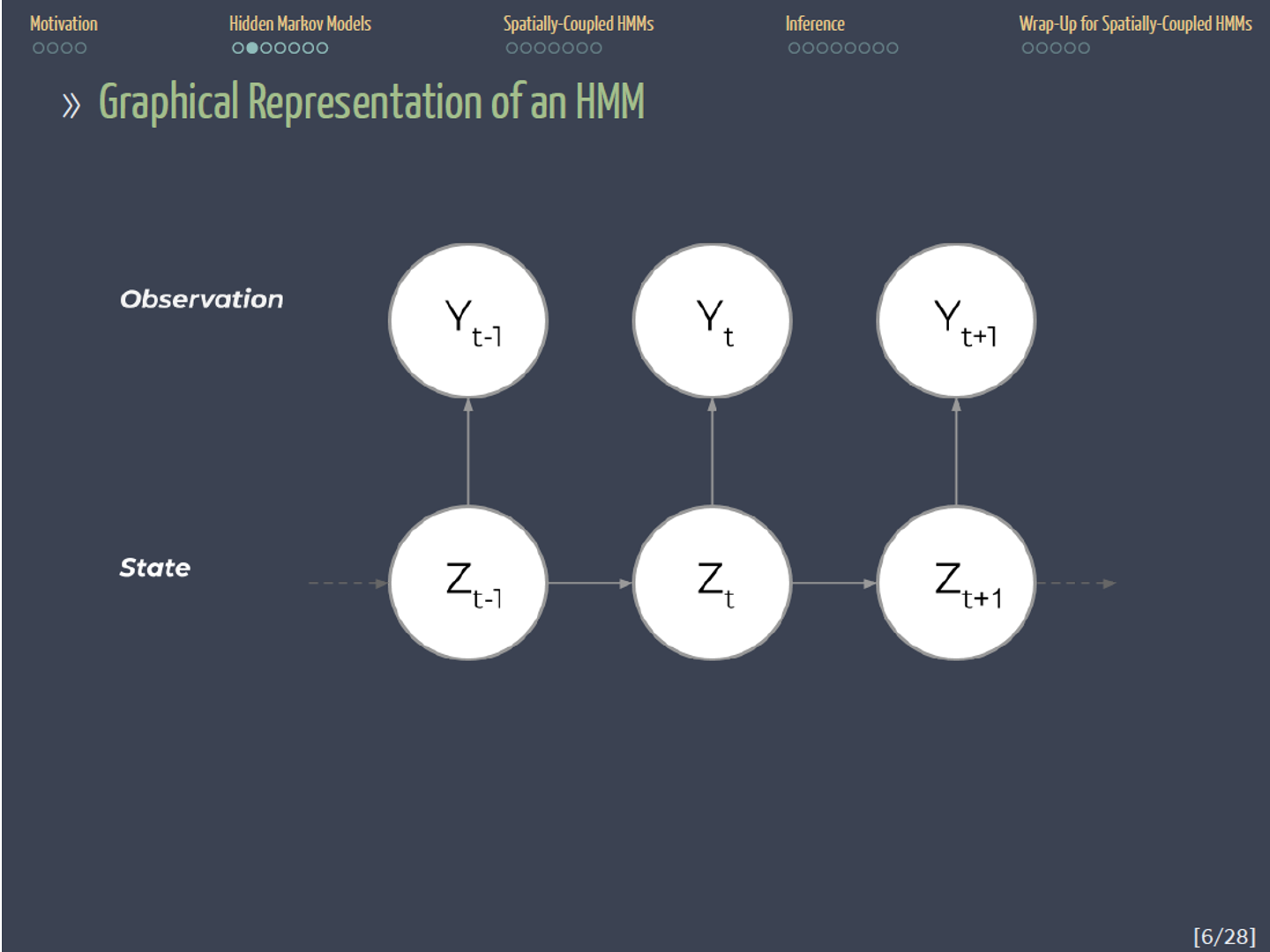Hidden Markov models (HMMs), and more generally Markov-switching models, are popular frameworks in the analysis of ecological and environmental data collected over time and space as HMMs work on the assumption that what we observe is a result of an underlying latent state. For example, in ecology, animal movement data is collected with the intention to infer behavioral states of the animal (such as foraging or resting), and in environmental sciences, wind turbines collect wind speed data as diferent wind speed states relate to diferent amounts of energy production.
However, much of the popularity associated with HMMs is due to the ease with which its framework can be extended. Here I present two projects that modify the basic HMM structure to model complex ecological and environmental data: including physiological processes in the analysis of animal movement fand spatially-coupled HMMs for short-term wind speed forecasting.
Vianey Leos Barajas ¹
Assistant Professor
Department of Statistical Science and School of the Environment
University of Toronto
Miércoles 9 de Setiembre
Hora 14:00 Plataforma Zoom
ID Reunión Zoom: 938 9512 8667
Contraseña: 2r+jP9x4h7
¹ vianey.leosbarajas@utoronto.ca

